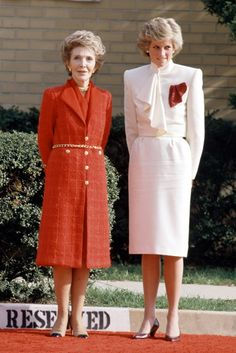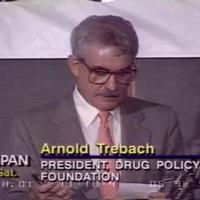The State of the Art: The Malcolms’ Examination of Straight, Incorporated, Part 4
- Marcus Chatfield
- Jul 21, 2016
- 5 min read
Updated: Aug 29, 2023
Editor’s Note: This is the fourth in a five-part series from Marcus Chatfield, a regular contributor to Points. Here he continues his examination of Straight, Inc., the controversial adolescent drug treatment program that existed from 1976 to 1993.
Carlton Turner visited (p. 7) the Saint Petersburg facility, two months after Andrew and Barbara Malcolm. He attended a Friday night “Open Meeting” on October 16, 1981 and soon after that visit, Straight’s National Director, James Hartz, asked Turner to write an endorsement letter for their Solicitation Presentation:
As you know from our telephone conversation, STRAIGHT, INC. is developing strategies for expanding our base in the search for funding. At the moment we are preparing an informative brochure to submit to those foundations, corporations, and individuals from whom we are requesting financial support. Enclosed is an outline illustrative of the type of information to be included. As soon as the brochure is completed, we will forward a copy to you. One of the most important facets of our presentation will be letters of support. We have already obtained permission from Dr. DuPont and Dr. Malcolm, who are forwarding their letters to us. The impact of a package such as ours is perceptibly enhanced by this type of verification. We are, of course, well-known in the areas in which we are located but a communication from you would substantially strengthen our credibility with those unfamiliar with our program and accomplishments (p. 15).
As the lawsuits and bad press accumulated during the years of expansion, this “perceptual enhancement” would become more and more important to Straight’s directors. As the ACLU was investigating the Atlanta program, within 6 months of its opening there, Robert DuPont (p. 1399) and Carlton Turner (p. 22) arranged for Nancy Reagan to visit the Saint Petersburg program, apparently in a show of solidarity. When Straight was (briefly) “cleared” of wrongdoing in Ohio and Georgia, James Hartz, wrote to Turner thanking him for his endorsement at the Florida fundraiser and “the efforts of your good offices in helping us over some rough spots during the past few months” (p. 24).

Nancy Reagan and Lady Diana visit a Straight facility in Springfield, Va.
That was just the beginning; as Straight expanded it was repeatedly sued – Vice President George Bush made a promotional visit in 1987 and a TV commercial for Straight. In 1988, As President-elect, he agreed to appear on a Straight Inc. fundraising telethon. As rumors about brainwashing spread, Nancy Reagan made highly publicized visits to Straight, one of them with Lady Diana. After multiple lawsuits and state investigations found evidence of widespread abuses, Ronald Reagan wrote a blurb for a Straight brochure.
The Malcolms’ Examination of Straight, Incorporated defends a very different program from the one documented by federal and state investigations, lawsuits, news reports and first-hand accounts. But even if the content of their report could be discredited as misinformation, it does reveal something about the picture Straight’s directors wanted to paint over the controversy:
Straight is designed to bring about a reversal of the system of values and behaviors that characterize the drug using teenage subculture by bringing to bear on the participants massive peer pressure to eschew the use of drugs and subscribe, once again, to the values that have characterized the mainstream of American culture for some time (p.2). No one is abused physically, no one is denied food or rest, no one is publically humiliated (p. 10). The adolescents are not subjected to either sensory bombardment or sensory deprivation. They are not rendered hungry, fatigued or physiologically unbalanced. They are never subjected to any form of isolation. They are exhorted only to think (p. 15). There is no problem in Saint Petersburg (p. 17). Straight, after all, represents the state of the art (p. 18).
The Malcolms’ report was a unique part of Straight’s fundraising package because it was meant to prove that Straight did not use methods of “brainwashing.” However, more than 50 highly questionable statements in their examination seem to reveal misconceptions the Malcolms may have had regarding the actual methods used by the program. Regardless of their intentions or the actual circumstances that could explain these discrepancies, the historical context of the report – why it was needed and how it was used – is probably more important than its content.
Straight Incorporated was distinctly different from a typical “cult,” for example, it didn’t rely on one central charismatic leader and it was designed as a temporary measure (although, one’s “personal program” was meant to be permanently internalized and “worked” forever.) And the term, “brainwashing,” is essentially impossible to define; for a formal assessment, it’s about as useful as the term “zombies.” In spite of this, I believe it would be accurate and fair to state that Straight Incorporated institutionalized unique methods of coercive persuasion, promoted a cultic ideology and relied on cultic dynamics in its treatment methods and corporate structure – in these ways the program is comparable to any extremist movement.
Robert DuPont and Straight’s directors presented their program as The Answer, promising parents that their methods restored drug using teens to their “normal” self – the person they were before the “disease took control.” Straight claimed to save families from the disease of chemical dependency but they had no valid scientific evidence to support their claims. Straight’s grueling daily schedule and emotionally charged weekly rituals relied on high-arousal techniques and the performance of regular public testimonies. Straight demanded consistent participation in group rituals and required an unquestioning obedience to authority figures and to the rules and norms of the group. Straight’s directors and staff worked to promote moral panic about drugs (especially marijuana), equating them to “evil” forces responsible for society’s ills. Straight’s directors promoted an unobtainable ideal, the goal of creating a totally drug free America – and a drug free world. Straight’s members were taught to rationalize and participate in harmful practices and the intentional infliction of pain as routine aspects of their “life-saving therapy” (p. 46). Gratitude for this treatment and willingness to perpetrate these acts were prerequisites for advancement towards relief from deprivations and permission to communicate with the outside world. Straight promoted an “us vs. them” mentality, demonizing the program’s dissidents and critics, polarizing people into two groups: those who “tolerated drugs” and those who didn’t. The destruction of some family and social ties were unavoidable necessities – “druggie” friends and family members (those not loyal to Straight) had to be cut off. When faced with evidence that Straight clients were harmed, Straight’s directors imposed rules forbidding members to speak about such incidents; they institutionalized collective and individual forms of denial by strictly controlling all threatening information. The program’s directors consistently placed the program over the people; they went to great lengths protecting Straight’s reputation while deceiving and consistently failing to provide adequate care for their clients. These types of dynamics and ideologies are specific manifestations of some of the general characteristics that define extremist organizations or cultic groups.
The history and evolution of abusive group-methods that were used in the treatment and reform of adolescents, and the way these methods were rationalized and promoted as genuine therapy, is an under-studied aspect of American History that could be related to larger, more-complex trends that are intertwined with the history of drug policy. Straight’s treatment methods may have been coercive and harmful, but perhaps even more destructive was the belief system that program directors promoted while influencing policy makers and affecting the wider population. The rationalizations (and individuals) that justified the use of Straight’s methods were some of the same rationalizations (and individuals) that helped entrench “The New Jim Crow” and other far-reaching legacies of the Reagan and Bush administrations.
The Malcolms’ examination of Straight Incorporated is a small but concrete example – one part of a bigger plan that was totally in-step with a zealous crusade to “Save Our Society” by any means necessary, and to establish a “Drug Free America” with or without human consent.
Check back next week for Part 5. Chatfield’s series will run every Thursday.




